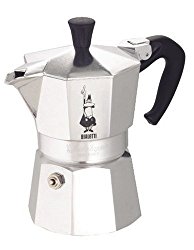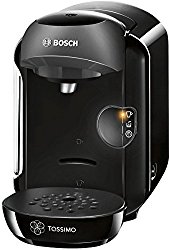Over the last 20 years the UK has seen the transformation from a Tea drinking nation to a Coffee drinking nation. The ratio is now 2½ cups of coffee to one cup of tea. Our 55 million cups of coffee add to the 2 billions cups consumed every day globally.
It’s not just quantity. The coffee we prefer to drink today is different to what it used to be; we’re getting more educated, sophisticated and willing to pay a lot more. We want more than dishwater grade filter coffee and cloudy cafetieres.
So what are the current options if we want to make a Barista quality coffee in our own home? The way I see it is that it is a combination of price and convenience and these are the three methods of how I’ve made coffee over the last year.
Instant Coffee
OK, I know, but don’t knock it. It’s still the most popular way to make coffee and according to the British Coffee Association, 80% of UK households buy instant coffee. Let’s be fair: the instant coffee of today is much improved from when I was young. There are more flavours and variants and for the cost of just a few pence per cup and the effort of boiling the kettle you have a reasonable cup of coffee which many people are more than happy with.
But many of us now crave after the real thing: the Espresso (not expresso as some people say) with it’s variants of adding water and/or milk to give us Latte, Americano and the leading style, Cappuccino. But we can make these at home too.
The traditional Stove-Top Coffee maker
 I’d seen the traditional stove-top coffee pots in stores and online. I used to wonder if these were actually for use or just put on the shelf for decoration, but I read a few reviews about the Bialetti maker and decided to give it a go. I’m glad I did too as the results are excellent. The pots come in various sizes, from 1-pot to 12-pot. Get the one which suits you. The 2-pot Bialetti is about £17 in Amazon UK but I see many stores with other makes starting under £10.
I’d seen the traditional stove-top coffee pots in stores and online. I used to wonder if these were actually for use or just put on the shelf for decoration, but I read a few reviews about the Bialetti maker and decided to give it a go. I’m glad I did too as the results are excellent. The pots come in various sizes, from 1-pot to 12-pot. Get the one which suits you. The 2-pot Bialetti is about £17 in Amazon UK but I see many stores with other makes starting under £10.
Besides making lovely coffee, the price per cup is not that much above a good instant coffee. There are plenty of varieties of coffee available already ground or you can use coffee beans and have freshly ground coffee. A manual grinder is about £10-20 but you can get electric coffee bean grinders for about the same price at Amazon.
On the downside there’s a bit of ceremony to using it. You have to unscrew the pot, add water, add coffee and place it on the stove (it works on gas or electric). But don’t walk away as after a few minutes the coffee brews and you have to remove it from the heat. Enjoy the silky smooth liquid it produces, but you may have to heat up some milk too.
I found two drawbacks. Firstly, keeping the coffee fresh; when you first open a bag it has a wonderful aroma, but this quickly fades after a few days even when kept in foil and this degrades the coffee taste too. Coffee beans are best as you get fresh coffee and you have the ultimate choice of coffee flavour, but you need about 42 beans for one espresso and it’s another step in the process.
Secondly was keeping the pot clean as the pot starts to smell after a while of use and it’s unpleasant enough to know when you are in the same corner as the coffee pot! My friend boils his pot weekly. Me, being so much more intelligent, decided that although the box said ‘do not clean in dishwasher’ I used the dishwasher; it cleaned the pot of not only the evil residue but also the chrome and left the pot manky and destined for the bin.
All that being said, if you’re willing to take the effort and done right, you’ll get professional tasting results.
The Coffee Pod (or capsule) Machine
This is the Tassimo, Nespresso, Dolce Gusto and like machines that now dominate the coffee shelves and white goods isles. I chose Tassimo because it has a good range of products (not only espresso but Latte varieties, chocolates and even tea) but I’ve heard good things about the quality of coffee in the other machines too.
 The main advantage of the coffee pod maker is that you only need to press a button; the machine does the rest and the quality of the coffee is right up there with professional coffee shops.
The main advantage of the coffee pod maker is that you only need to press a button; the machine does the rest and the quality of the coffee is right up there with professional coffee shops.
Literally, all you need to do is ensure that there is enough water in it, insert the pod/capsule (two if you have a milky drink like latte), place a cup under the nozzle and click the start. You’ll get a drink in less than a minute. It’s so convenient you can have a machine next to your bed and have a coffee every morning without getting up!
The machines are fairly compact and there are many manufacturers and models available, starting at under £40 and going over £100 if you want milk frothers or other fancy features. There are many models sold by Amazon.
The pods are sealed and so the coffee is always fresh and the empty pod is just discarded so cleaning and maintenance are at a minimum.
Pod machines win big on the convenience of use. The main drawback is cost, which may be 50p per cup or more. A straight espresso is from 20p, but you can always add this to milk/water (warmed up in a microwave or pan) and make other drink variants yourself.
You easily get attached to these machines – just relax and drink, no messing. They are probably the future of coffee in the home.



